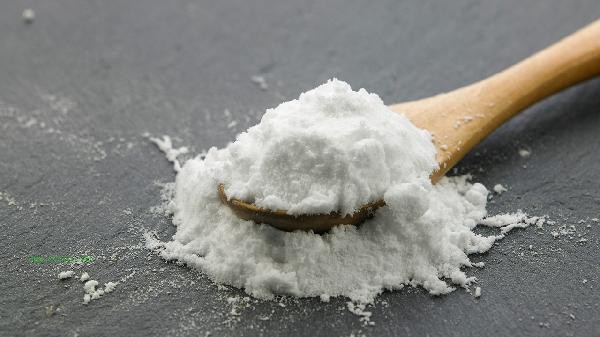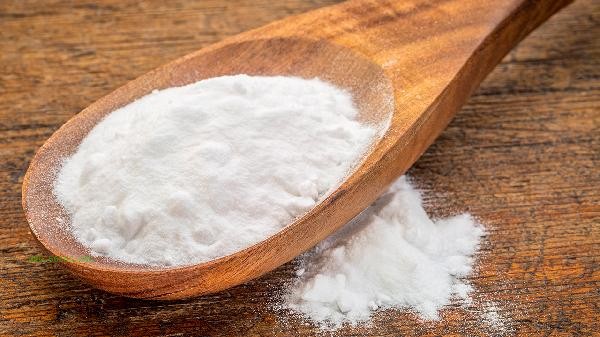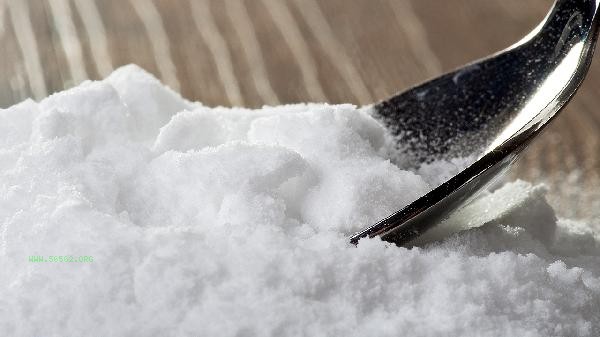Baking soda can effectively remove scale, mainly through dissolving carbonate precipitates and weakly alkaline neutralization reactions. Common methods include hot water immersion, paste coating, spray dissolution, boiling scale removal, and regular maintenance.

1. Hot water soaking method
Mix baking soda with hot water above 60 ℃ in a ratio of 1:10, and soak the container or component with scale for more than 2 hours. High temperature can accelerate the displacement reaction between sodium bicarbonate and calcium magnesium ions, especially suitable for heating metal components such as electric kettles, shower heads, etc. After soaking, wiping with a soft cloth can remove more than 90% of scale and is non corrosive to stainless steel and glass materials.
2. Paste application method
Take 3 tablespoons of baking soda and 1 tablespoon of water to make a paste, evenly apply it to stubborn scale and let it sit for 30 minutes, then scrub with a nylon brush. This method utilizes the grinding effect of high concentration baking soda, which is particularly suitable for mechanically wiping difficult areas such as the inner edge of toilets and tile joints. It is recommended to use sponge instead of steel wire balls when dealing with ceramic and enamel surfaces to avoid scratches.
3. spray dissolution method
Dissolve 50g baking soda in 200ml warm water and put it into a spray bottle to spray the vertical surfaces of the glass shower room, faucet, etc. The liquid form can penetrate into fine gaps, and when wiped in circles with fish scale cloth, it can decompose the newly formed scale film. This method has a polishing effect on chrome plated parts, but attention should be paid to avoiding the solution from flowing into the interior of the electrical switch.

4. Boiling descaling method
Add 1 liter of water and 2 tablespoons of baking soda to a boiling water container, and keep boiling for 5 minutes after boiling. Under high temperature and pressure conditions, baking soda decomposes to produce sodium carbonate bubbles, which can peel off firmly attached boiler scale. Suitable for aluminum kettles and coffee machine water storage tanks, after treatment, it needs to be boiled twice with clean water to remove residual alkali odor. This method can prevent scale accumulation by using it once a month.
5. Regular maintenance method
Use 1 teaspoon of baking soda mixed with 500 milliliters of clean water every week to wipe areas prone to scale buildup such as washbasins and bathtubs. Preventive use can alter the surface tension of water bodies and reduce the deposition of calcium and magnesium ions. Combined with citric acid, deep cleaning once a month can keep the utensils clean and prevent frequent use of strong acid corrosion. Plastic and rubber components should be wiped with baking soda solution to prevent aging.

It is recommended to use white vinegar or citric acid for daily descaling to enhance the effect, but it should be noted that the two should not be mixed with baking soda at the same time. After handling drinking water containers, they should be thoroughly rinsed, and food grade baking soda can be used for sensitive individuals. For aged scale or internal scaling of electrical appliances, it is recommended to mechanically remove large deposits before using baking soda solution. In areas with long-term hard water, a water softener can be installed to reduce scale formation at the source, while regularly checking the consumption of magnesium bars in the water heater.








Comments (0)
Leave a Comment
No comments yet
Be the first to share your thoughts!